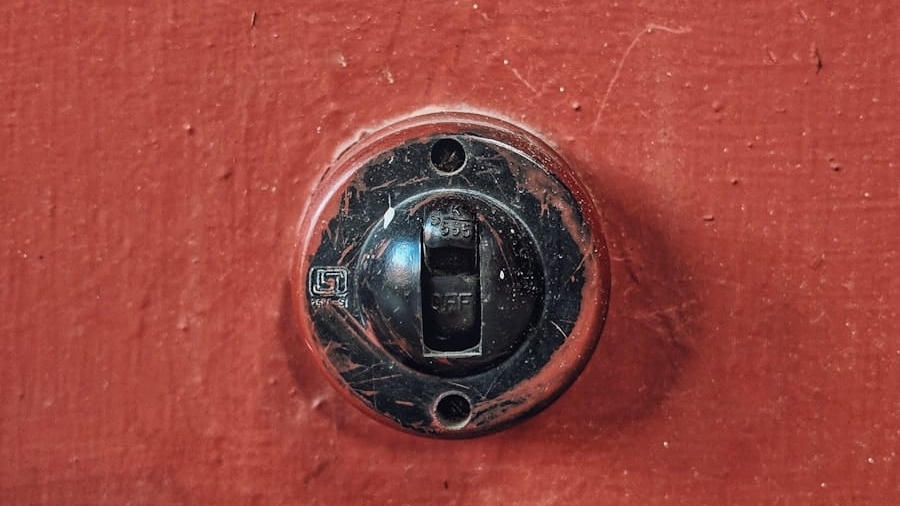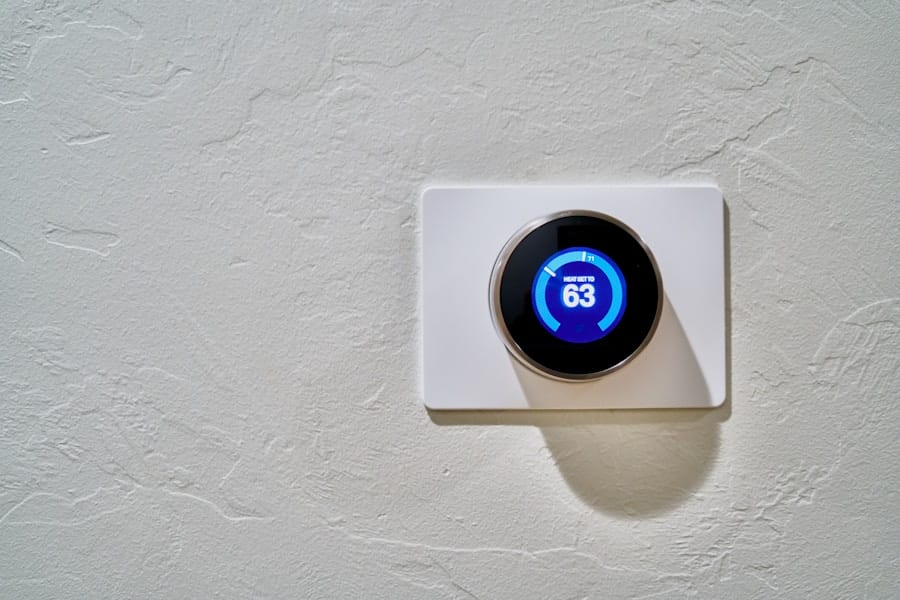The advent of smart home technology has revolutionized the way we interact with our living spaces, offering unprecedented convenience and control. However, this convenience comes with a significant downside: the increased risk of cyber attacks. Smart home devices, ranging from smart thermostats to security cameras, are often connected to the internet, making them vulnerable to unauthorized access.
Cybercriminals can exploit these vulnerabilities to gain control over devices, invade privacy, or even launch attacks on other connected systems. For instance, a compromised smart camera could provide a hacker with a live feed of your home, while a hacked smart lock could allow them to enter your property undetected. Moreover, the interconnected nature of smart home devices creates a cascading effect where the compromise of one device can lead to the breach of others.
This phenomenon is often referred to as the “domino effect.” For example, if a hacker gains access to a smart light bulb, they may be able to use that access to infiltrate your home network and reach more critical devices like your smart security system or personal computers. The risks are not merely theoretical; there have been documented cases where entire smart home systems have been hijacked, leading to significant financial loss and privacy violations. Understanding these risks is the first step in safeguarding your smart home environment.
Key Takeaways
- Cyber attacks on smart homes can lead to privacy breaches, theft of personal information, and even physical harm.
- Securing your smart home network with a strong password and encryption is crucial to prevent unauthorized access.
- Regularly updating and patching smart home devices can fix vulnerabilities and protect against potential cyber attacks.
- Implementing strong passwords and two-factor authentication adds an extra layer of security to your smart home devices.
- Monitoring and managing smart home devices can help detect any unusual activity and prevent potential cyber threats.
Securing Your Smart Home Network
Securing your smart home network is paramount in mitigating the risks associated with cyber attacks. The first line of defense is often your Wi-Fi network, which serves as the backbone for all connected devices. To enhance security, it is advisable to change the default network name (SSID) and password provided by your Internet Service Provider (ISP).
Default settings are widely known and can be easily exploited by hackers. A unique SSID that does not reveal any personal information about you or your household can make it more difficult for attackers to target your network.
Many modern routers offer the option to create a guest network specifically for smart devices. This means that even if a smart device is compromised, the hacker would not have direct access to your primary network where sensitive data and personal devices reside. Furthermore, enabling WPA3 encryption on your router provides an additional layer of security, making it significantly harder for unauthorized users to intercept data transmitted over your network.
Regularly reviewing connected devices and removing any that are no longer in use can also help minimize potential vulnerabilities.
Updating and Patching Smart Home Devices
Keeping your smart home devices updated is crucial for maintaining their security integrity. Manufacturers frequently release firmware updates that address known vulnerabilities and enhance device functionality. Failing to install these updates can leave your devices exposed to cyber threats.
For instance, in 2020, a significant vulnerability was discovered in certain models of smart locks that could allow hackers to unlock doors remotely. The manufacturer released a patch shortly after the discovery, but users who did not update their devices remained at risk. To ensure that you do not miss critical updates, enable automatic updates whenever possible.
Many devices allow you to set them to update automatically during off-peak hours, minimizing disruption while ensuring that you benefit from the latest security enhancements. Additionally, regularly checking the manufacturer’s website or subscribing to their newsletters can keep you informed about new updates and security advisories. It is also wise to periodically review the list of devices connected to your network and remove any that are outdated or no longer supported by their manufacturers, as these can become easy targets for cybercriminals.
Implementing Strong Passwords and Two-Factor Authentication
The importance of strong passwords cannot be overstated when it comes to securing smart home devices. Weak passwords are one of the most common entry points for cyber attackers. A strong password should be at least 12 characters long and include a mix of uppercase letters, lowercase letters, numbers, and special characters.
Avoid using easily guessable information such as birthdays or common words. Instead, consider using a passphrase—a series of random words strung together—which can be both memorable and secure. In addition to strong passwords, enabling two-factor authentication (2FA) adds an extra layer of protection.
2FA requires users to provide two forms of identification before accessing an account or device—typically something they know (like a password) and something they have (like a smartphone app that generates a time-sensitive code). This means that even if a hacker manages to obtain your password through phishing or other means, they would still need access to your second factor to gain entry. Many smart home device manufacturers now offer 2FA as an option; taking advantage of this feature can significantly enhance your overall security posture.
Monitoring and Managing Smart Home Devices
Active monitoring and management of your smart home devices are essential practices for maintaining security. Regularly reviewing which devices are connected to your network can help you identify any unauthorized access or anomalies in device behavior. Many routers come equipped with management tools that allow you to see all connected devices and their activity levels.
If you notice unfamiliar devices on your network, it may indicate that someone has gained unauthorized access. In addition to monitoring connected devices, consider implementing usage policies for family members who share the smart home environment. Educating everyone about the importance of security practices—such as not sharing passwords or clicking on suspicious links—can help create a culture of security awareness within the household.
Furthermore, utilizing device management apps provided by manufacturers can help you control settings remotely, monitor usage patterns, and receive alerts about potential security issues.
Using a Virtual Private Network (VPN) for Added Security
A Virtual Private Network (VPN) can serve as an effective tool for enhancing the security of your smart home network. By encrypting internet traffic between your devices and the internet, a VPN makes it significantly more difficult for hackers to intercept data or track online activities. This is particularly important when using public Wi-Fi networks, which are notoriously insecure and often targeted by cybercriminals looking to exploit vulnerable connections.
When selecting a VPN service, it is crucial to choose one that does not log user activity and offers robust encryption protocols. Some VPNs also provide features like split tunneling, which allows you to choose which applications use the VPN connection while others connect directly to the internet. This flexibility can be beneficial for managing bandwidth while still maintaining security for sensitive activities like online banking or accessing smart home controls remotely.
Educating Yourself and Your Family about Cyber Security
Cybersecurity education is an ongoing process that should involve all members of the household. Understanding the potential risks associated with smart home technology is essential for everyone who interacts with these devices. Regular discussions about cybersecurity best practices can help reinforce the importance of vigilance in protecting personal information and connected devices.
For example, teaching family members how to recognize phishing attempts—such as suspicious emails or messages asking for personal information—can significantly reduce the likelihood of falling victim to such scams. In addition to informal discussions, consider setting aside time for structured learning about cybersecurity topics relevant to smart homes. There are numerous online resources, courses, and webinars available that cover everything from basic cybersecurity principles to advanced topics like ethical hacking and penetration testing.
Engaging in these educational opportunities not only empowers family members but also fosters a collective responsibility toward maintaining a secure smart home environment.
Seeking Professional Help for Smart Home Security
While many homeowners can implement basic security measures on their own, seeking professional help can provide an added layer of assurance when it comes to securing smart home systems. Cybersecurity professionals possess specialized knowledge and tools that can identify vulnerabilities within your network that may not be apparent through casual observation. They can conduct comprehensive security assessments, penetration testing, and vulnerability scans tailored specifically for smart home environments.
Additionally, professional services often include ongoing monitoring and support options that can help you stay ahead of emerging threats in real-time. For instance, some companies offer managed security services that continuously monitor network traffic for unusual activity and respond promptly to potential breaches. Investing in professional assistance may seem costly upfront; however, considering the potential financial loss and emotional distress caused by a successful cyber attack, it can be viewed as a prudent investment in peace of mind and long-term security for your smart home ecosystem.
If you are interested in learning more about the latest tech products for 2023, check out this article. It provides insights into the most innovative and cutting-edge technology that will be hitting the market in the coming year. Stay ahead of the curve and discover the exciting advancements in the world of tech.
FAQs
What is a smart home?
A smart home is a residence that uses internet-connected devices to enable the remote monitoring and management of appliances and systems, such as lighting and heating.
What are the potential cyber threats to a smart home?
Cyber threats to a smart home include unauthorized access to devices, data breaches, malware attacks, and exploitation of vulnerabilities in smart home devices.
How can I protect my smart home from cyber attacks?
To protect your smart home from cyber attacks, you can take measures such as using strong, unique passwords for all devices, keeping software and firmware updated, using a secure Wi-Fi network, and implementing network segmentation.
What are some best practices for securing smart home devices?
Best practices for securing smart home devices include disabling unnecessary features, using two-factor authentication when available, and regularly reviewing and updating privacy and security settings.
Are there any specific security tools or software for smart home protection?
There are security tools and software designed specifically for smart home protection, such as antivirus and firewall solutions for smart devices, as well as network monitoring and intrusion detection systems.
What should I do if I suspect my smart home has been compromised?
If you suspect your smart home has been compromised, you should immediately disconnect affected devices from the network, change all passwords, and contact the device manufacturer for further assistance.



